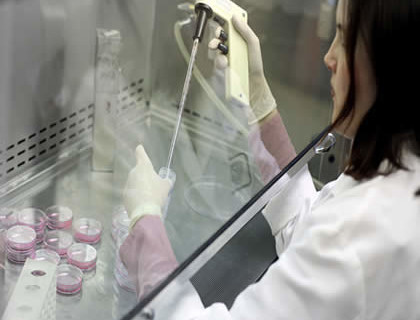
3D Cell Culture Market Expected to Grow: As 3D Cell Culture Demonstrates Research Benefits
Cell culture is an important tool for research and development in the life sciences industry. While most researchers still rely on the conventional, two-dimensional (2D) cell culture method, the 3D cell culture model is gaining popularity among researchers in recent years due to the benefits this model offers over the conventional method.
2D cell culture involves growing cells on a flat surface called 2D monolayers. This method limits the formation of multi-dimensional cell cultures. In the 3D cell culture method, on the other hand, biological cells are allowed to grow or interact with their surroundings in all three dimensions. This method enables cells to grow in vitro; these surroundings better mimic the in vivo conditions in which the cells are naturally present. The 3D cell culture technique has proven to be very efficient in several studies of basic biological mechanisms such as cell number monitoring, cell viability, cell proliferation, cell morphology, and so on. Moreover, 3D cell cultures have greater stability and longer lifespans compared to 2D cell cultures.
Owing to the benefits offered by the 3D cell culture model, these techniques are being widely adopted in cancer research studies. Cancer cells grown in 2D cell cultures can be easily destroyed by low dosage radiation, while the same cells grown in 3D cell cultures are far more resistant to low radiation doses, thus mimicking an in vivo environment. Therefore, 3D cell culture technique is considered a more practical approach for testing and discovering new drugs to treat cancer.
Recent technological advances have also enabled the use of microfluidics in 3D cell culture for the development of microenvironments that support tissue differentiation and replicate the tissue-tissue interface, spatiotemporal chemical gradients, and mechanical microenvironments of living organs. This organ-on-a-chip model enables the study of the human physiology in an organ-specific context, which allows the development of in vitro disease models and can eventually serve as a replacement for animal models in drug development and toxicity testing. Owing to these benefits, the adoption of microfluidics for 3D cell culture studies is expected to grow in the coming years. Mimetas, Emulate, and InSphero are some of the key players actively involved in the research and development of microfluidics for 3D cell cultures.
Apart from the opportunities presented by microfluidics-based 3D cell culture, 3D cell printing is another noteworthy addition to the 3D cell culture market. 3D cell printing uses inkjet-like nozzles to deposit cells into defined structures. The technique uses 3D printing to produce organ models. Several universities and companies, such as BioBots, and Organovo, are working towards the development of 3D-printed organ models.
The 3D cell culture market is competitive, with a large number of market players, including established players, mid-tier companies, and startup firms. Prominent players in the market include Thermo Fisher Scientific, Corning, Merck KGaA, Lonza, ReproCELL, InSphero, Global Cell Solutions, Synthecon, 3D Biotek LLC, Kuraray, Hamilton, Mimetas, Emulate, Nano3D Biosciences, Q Gel, Microtissues, Matek, Nano Fiber Solutions, and Cosmo Bio Japan. To strengthen their market presence, these players adopted various inorganic and organic growth strategies such as agreements, partnerships, and collaborations; product launches/upgrades; patent approvals; expansions; and mergers and acquisitions.
Researchers around the world are realizing the potential of the 3D cell culture method for various applications, which is why the 3D cell culture market is likely to grow over the next few years. According to a recent research study published by MarketsandMarkets, the global 3D cell culture market is projected to reach USD 1,720.3 million by 2022 from USD 682.8 million in 2017, at a CAGR of 20.3% during the forecast period (2017–2022). Growth in this market is also driven by global factors such as the focus on developing alternative methods to animal testing, funding initiatives from governments and private investors, technological advancements, and regular product launches. Growing awareness about 3D cell culture via conferences, workshops, trade fairs, and forums also contributes to market growth.
To read more about the market study and the assumptions considered, Download the PDF Brochure